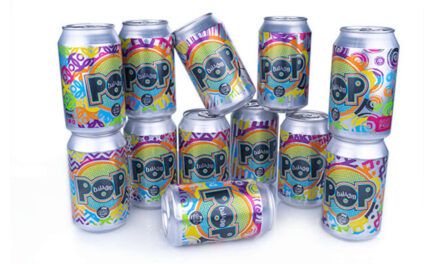
Canadian Consumers Refilling Their Coffee Cups

By Angela Altass
The recent Coffee Association of Canada virtual conference, Refilling Our Cup, discussed how Canadian coffee consumers have responded to the past year of changing regulations, openings and closures, and COVID-19 waves.
“In any non-pandemic year, we would expect to see around 78 per cent of coffee drinkers having at least one coffee prepared at home,” said Cheryl Hung, vice president, Dig Insights. “At the start of lockdowns, in April 2020, we saw that number skyrocket to 92 per cent and then throughout 2020 it ebbed and flowed up and down at much higher levels than was seen pre-pandemic. With the introduction of the vaccines in 2021, we saw that in-home number start to come down and the latest data, from September, puts it at around 81 per cent so it’s a little bit higher than the 78 per cent but definitely much lower than what we saw in 2020.”
Throughout 2020 and 2021, gourmet coffee options, such as espresso-based beverages, cold brews, and frozen blends, remained popular with consumers, especially those in a younger demographic.
“I like to think there’s a coffee for everyone,” commented Hung. “Generally speaking, the older you are, the more likely you are to drink traditional coffee. The specialty segment is mainly driven by younger consumers. As North America is essentially an aging population, traditional coffee is not going anywhere. Specialty coffee is getting a lot of hype and attention because it is a growth category but it’s folks under 40 who are driving that segment.”
Although consumers have been staying at home more and restaurants, particularly those serving morning and lunch customers, have been hard hit by the pandemic, Vince Sgabellone, industry analyst, NPD Canada, said the outlook for foodservice coffee is not all doom and gloom.
“The foodservice industry lost about 700 million servings of coffee during the first 12 months of the pandemic,” stated Sgabellone, “and about one-quarter of that has been recaptured over the last two quarters, reflective of back-to-school and back-to-work activities that started to resume in September.”
Instead of focusing on the downturn in coffee servings, Sgabellone encourages those in foodservice to focus on how they can continue to serve their customers.
“Prior to March 2020, coffee servings were already softening a bit for out-of-home, therefore it is unlikely that foodservice coffee will ever reach pre-pandemic levels again,” stated Sgabellone. “One-quarter of all foodservice coffee is consumed in the home. Your customers are at home, so you need to figure out the best way to reach them there. Also, one-third of all foodservice coffee is now being consumed in the car. Despite all the disruption in the industry, drive-thru and delivery coffee orders have gone up. While delivery is still a very small portion of foodservice coffee at this time, it has more than tripled since 2019.”
Although nearly one-quarter of consumers have said they created their own specialty beverage at home during the pandemic, two-thirds of survey respondents told NPD Canada that they expect to return to purchasing these beverages out-of-home next year, stated Pam Wood, industry analyst, NPD Canada.
“We’ve been surveying consumers constantly throughout the pandemic about their changing behaviour,” noted Wood. “Canadians will definitely return to their workplaces in 2022, however it’s going to look very different as they will continue to spend more time at home compared with prior to the pandemic.”
It is anticipated that 70 per cent of the workforce in Canada will be working from home at least five days a month in 2024, said Sylvain Charlebois, senior director, agri-food analytics lab, Dalhousie University.
“Local food is huge and although we don’t grow coffee in Canada, we have Canadian brands and this will be an important factor,” said Charlebois. “But, there is no clear definition of local. It means different things to different people. About 25 per cent of Canadians are proactively looking for local and will only buy local. The other 75 per cent value local very much but life kicks in and people follow a budget. Local is often considered to be more expensive.”
Out-of-home coffee purchases have shifted from routine to indulgent visits, as coffee becomes more than just a functional beverage that we have during the day, said Sgabellone.
“Specialty coffee purchases are now spread out during the afternoon and evening hours as people are looking to treat themselves when they do leave home,” said Sgabellone.
Knowing your customer is instrumental, stated Vanessa Toperczer, senior vice president, IMI International.
“Keep an eye on the younger generation, the 19-24 year olds, and see what you can do to recruit them,” said Toperczer. “Who is the consumer and what are their passion points? You have to know who your purchaser is so you know how to engage with them.”
Millennials outnumber baby boomers now, noted Charlebois.
“The oldest millennials are 42 years old and they are very influential,” commented Charlebois. “They have money and they will dictate new trends. Have you upped your game since the pandemic? That’s the question you have to ask yourself because you are interacting with a very different consumer. What we’ve gone through is incredible but I do see an opportunity for coffee in general in how people still want to connect. In terms of innovation, I’m looking for that next thing. We got the cold brew a few years ago but I think we need to continue to innovate in coffee and keep consumers intrigued as much as possible.”
Canadian consumers are anxious and jittery, said Matthew Barry, beverages consultant, Euromonitor International, but, even with their stress, anxiety and sleeping problems, they are not very interested in decaffeinated beverages.
“Instead of drinking decaf, they are drinking more caffeine to get through their days, even though drinking high levels of caffeine, in order to get more done, is compounding their problem,” stated Barry.
Information shared at the Coffee Association of Canada conference shows that Canadians still love coffee but they are accessing and consuming it a little bit differently than before the pandemic.
“It’s up to the industry to support these new consumer habits while we wait for some of the old habits to return,” noted Sgabellone.



































